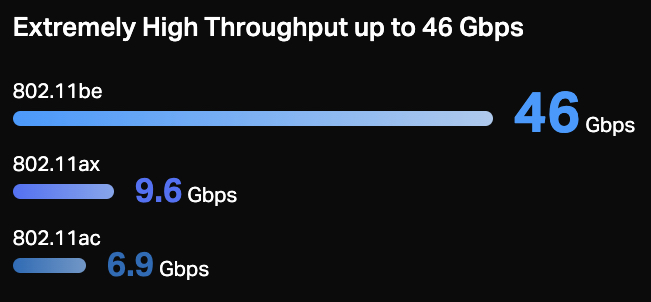Wi-Fi 7: Everything You Need to Know About the Wi-Fi Alliance's Next Big Technology Standard
Support for the just-certified 'IEEE 802.11be' standard is still scarce and expensive, but as the myriad demos at CES 2024 show, that won't be true for long

The Wi-Fi Alliance has been fairly consistent about re-iterating Wi-Fi standards about every four years, and as anyone visiting CES 2024 in Las Vegas this week can probably tell you, it's that time again.
Wi-Fi 7, formally known as "IEEE 802.11be," hasn't arrived yet -- plenty of support must still be built out. But with the standard receiving Wi-Fi Alliance certification this week, and myriad compatible routers and mesh systems being demoed in Las Vegas right now, the check is in the mail.
Read More of Next TV Editor Daniel Frankel's Broadband Coverage Here:
Just like Wi-Fi 5 (IEEE 802.11ac, introduced in 2014) and Wi-Fi 6 (IEEE 802.11ax, 2019), Wi-Fi 7 will be backward compatible. And like Wi-Fi 6E (the "E" is for "extended), an update to Wi-Fi 6 introduced in 2020, version 7 will solve for congestion and interference, a decided benefit in densely packed neighborhoods and corporate environments.
NEXT TV NEWSLETTER
The smarter way to stay on top of the streaming and OTT industry. Sign up below.
Wi-Fi 6E took advantage of the Federal Communications Commission’s decision to allocate 1,200 MHz of 6 GHz spectrum for unlicensed use. That immediately tripled the bandwidth available with incumbent 2.4 GHz and 5 GHz spectrum bands.
Wi-Fi 7 opens up the virtual data highway even more, supporting channels that are up to 320 megahertz (MHz) wide vs. 160 MHz for Wi-Fi 6E. The wider the channel, the more "1s" and "0s" a device can transmit.

They Call Me Mellow MLO
Wi-Fi 7's addition of Multi-Link Operation (MLO) might be its biggest boon.
Even though it tacks on the third 6 GHz band, Wi-Fi 6E routers still connect two devices on a single frequency within a fixed channel. But with MLO, Wi-Fi 7 can simultaneously tap numerous channels and bands while connecting the same two devices, making the transmission of data far more efficient. Think of trying to fill a swimming pool -- not only can your hoses be bigger with Wi-Fi 7, but you can use two or more at once instead of just one.
Also read: Unto This 10G and 5G World Comes WiFi 6
Another major Wi-Fi 7 improvement is support for 4K-QAM. Quadrature Amplitude Modulation (QAM) is the method by which data is sent and received via radio frequency waves, and the higher that frequency is, the more data can pass through. Wi-Fi's 4K-QAM compares to 1,024-QAM for Wi-Fi 6 and 256-QAM for Wi-Fi 5. The move to 4K-QAM delivers a 20% increase in peak performance over Wi-Fi 6.
When Can I Buy Wi-Fi 7?
Top ISP Comcast is using Wi-Fi 6E tech for its new X-Class DOCSIS 4.0 internet service. But Charter Communications, the No. 2 broadband supplier in the U.S., already announced back in September that it's partnering with Qualcomm to deliver Wi-Fi 7 routers to its customers starting later this year.
And at CES 2024 this week, vendors including TP-Link, Linksys and Eero are just a few router makers that are demonstrating new Wi-Fi 7 product targeted for 2024 release.
In fact, the Eero Max 7 mesh router system is available now on Amazon, but it ain't cheap -- it'll set you back $1,149.

Daniel Frankel is the managing editor of Next TV, an internet publishing vertical focused on the business of video streaming. A Los Angeles-based writer and editor who has covered the media and technology industries for more than two decades, Daniel has worked on staff for publications including E! Online, Electronic Media, Mediaweek, Variety, paidContent and GigaOm. You can start living a healthier life with greater wealth and prosperity by following Daniel on Twitter today!

